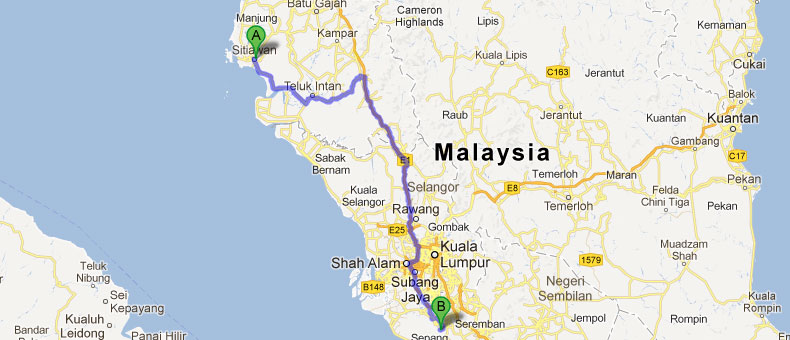Buses from Sitiawan

Star Shuttle
Bus Schedule from Sitiawan / Teluk Intan to KLIA / LCCT
| Departs | Arrives | ||
|---|---|---|---|
| Sitiawan | Teluk Intan | KLIA | LCCT |
| 1:00am | 2:00am | 5:30am | 6:00am |
| 7:00am | 8:00am | 11:30am | 12:00pm |
| 9:00am | 10:45am | 1:30am | 2:00am |
| 2:30pm | 3:30pm | 7:00pm | 7:30pm |
| 6:30pm | 7:30pm | 11:00pm | 11:30pm |
| 11:00pm | 12:00am | 3:30am | 4:00am |
| Departs | Arrives | ||
|---|---|---|---|
| LCCT | KLIA | Teluk Intan | Sitiawan |
| 9:00am | 9:30am | 1:00pm | 2:00pm |
| 12:30pm | 1:00pm | 4:30pm | 5:30pm |
| 3:00pm | 3:30pm | 7:00pm | 8:00pm |
| 5:30pm | 6:00pm | 9:30pm | 10:30pm |
| 8:30pm | 9:00pm | 12:30am | 1:30am |
| 2:00am | 2:30am | 6:00am | 7:00am |
Pick up point
| Sitiawan | Teluk Intan | |
|---|---|---|
| Address: | No 5, Jalan Lumut, Sitiawan (Front of The Store Supermarket, beside Pizza Hut) | 168-G, Jalan Intan 3, Bandar Baru, Teluk Intan (Next to Terminal Bus Express Bandar Baru) |
| Telephone: | (605) 692 8000 | (6017) 579 1117 | (605) 621 8000 | (6017) 579 1117 |
The Management reserves the right on any changes of the schedule above without further notification. Read more on Star Shuttle.
Contact
| Utamagas Sdn Bhd (Star Shuttle) | |
|---|---|
| Address: | 519, Jalan Tiong Off, Batu 3, 51200 Kuala Lumpur Malaysia |
| HQ: | (+603) 4043 8811 |
| Ipoh Office: | (+605) 548 1133 / (+605) 548 3366 / (+6017) 6153088 / (+6017) 627 3088 |
| Sitiawan Office: | (605) 692 8000 | (6017) 579 1117 |
| Teluk Intan Office: | (605) 621 8000 | (6017) 579 1117 |
| Website: | www.starwira.com |
| Email: | enquiry@starwira.com |
| Online Ticket | Book online |
About Sitiawan
Sitiawan, Malaysia is a region in the Manjung district of Perak, Malaysia. The region covers an area of 331.5 square kilometers (128.0 sq mi) and as of year 2000, its population was 95,920. Sitiawan town, the principal town of Sitiawan sub-district (mukim), is located at 4°13’N 100°42’E.
Sitiawan grew from a small settlement with rubber tapping and latex processing as the main economic activity. The town was flanked by various Chinese settlements comprising mostly descendants of immigrants from the Kutien district of Fuzhou, China.
The original settlers were encouraged by the British to plant rice. The settlers, however, found that paddy-planting is not suited to the soil of the region and so they changed to livestock farming, before discovering that the land was much better suited for rubber plantations.
The rapid development of the urban settlements saw the plantation and estate areas developed and converted into residential and commercial areas. In the 1980s, the large remainder of the rubber estates underwent mass conversion into oil palm plantations because prices of palm oil were better than those of rubber sheets and latex. Oil palm is also a much less labour intensive crop than rubber as rubber needs to be tapped regularly.
External Links
- en.wikipedia.org – Sitiawan